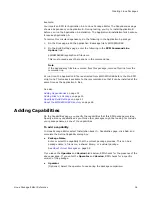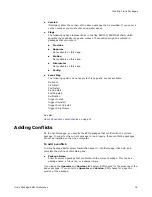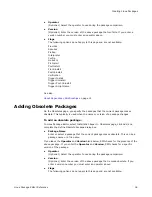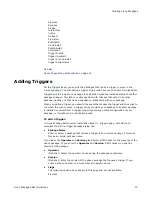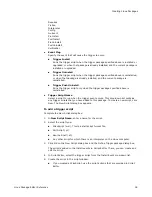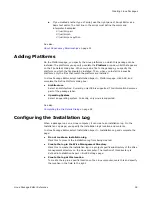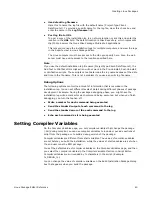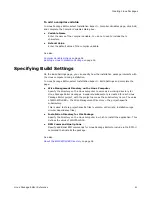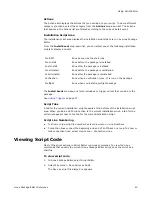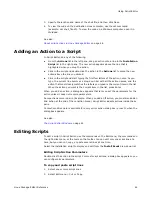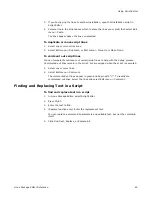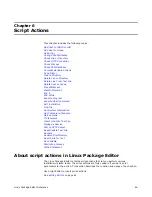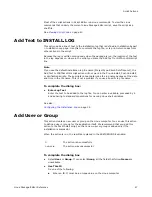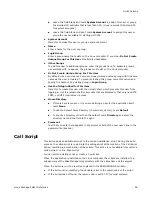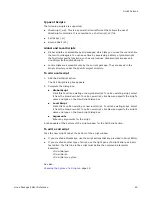
Linux Package Editor Reference
47
Script Actions
Most of the script actions in Script Editor run Linux commands. To view the Linux
commands that underly the current Linux Package Editor script, save the script as a
shell file.
See
Viewing Script Code
on page 43.
Add Text to INSTALL.LOG
This action adds a line of text to the installation log that is defined in Installation Expert
> Installation Log page. Use this to comment the log file, or to print return codes from
other actions in the script.
Because the log is written continuously when the package is run, the location of the text
in the log depends on where in the script you place the Add Text to INSTALL.LOG script
line.
Note
If you use the default installation log file name (Project-Type-Client-DateTime.txt), the
Add Text to INSTALL.LOG script action will not work in the Pre-Uninstall, Post-Uninstall,
or Verification scripts. Those scripts cannot determine the log name because of the date
and time in the file name. This is not a problem if you use a specific log file name.
To complete the dialog box:
z
Enter Log Text
Enter the text to be added to the log file. You can enter a variable, preceded by $
and adhering to standard conventions for naming Linux shell variables.
See also:
Configuring the Installation Log
on page 39
Add User or Group
This action creates a new user or group on the Linux computer. You can use this action
to define a user or group for the application itself. We recommend that you add this
action to the Post-Install script, so that a new user or group is added only if the
installation is successful.
When the action is run, the results are placed in the $RETURNCODE variable:
To complete the dialog box
z
Select User or Group. If you select Group, all the fields that follow Name are
unavailable.
z
Use This ID
Do one of the following:
Enter an ID. It must be a unique value on the Linux computer.
0
The action ran successfully.
non-zero
The action was unsuccessful.


